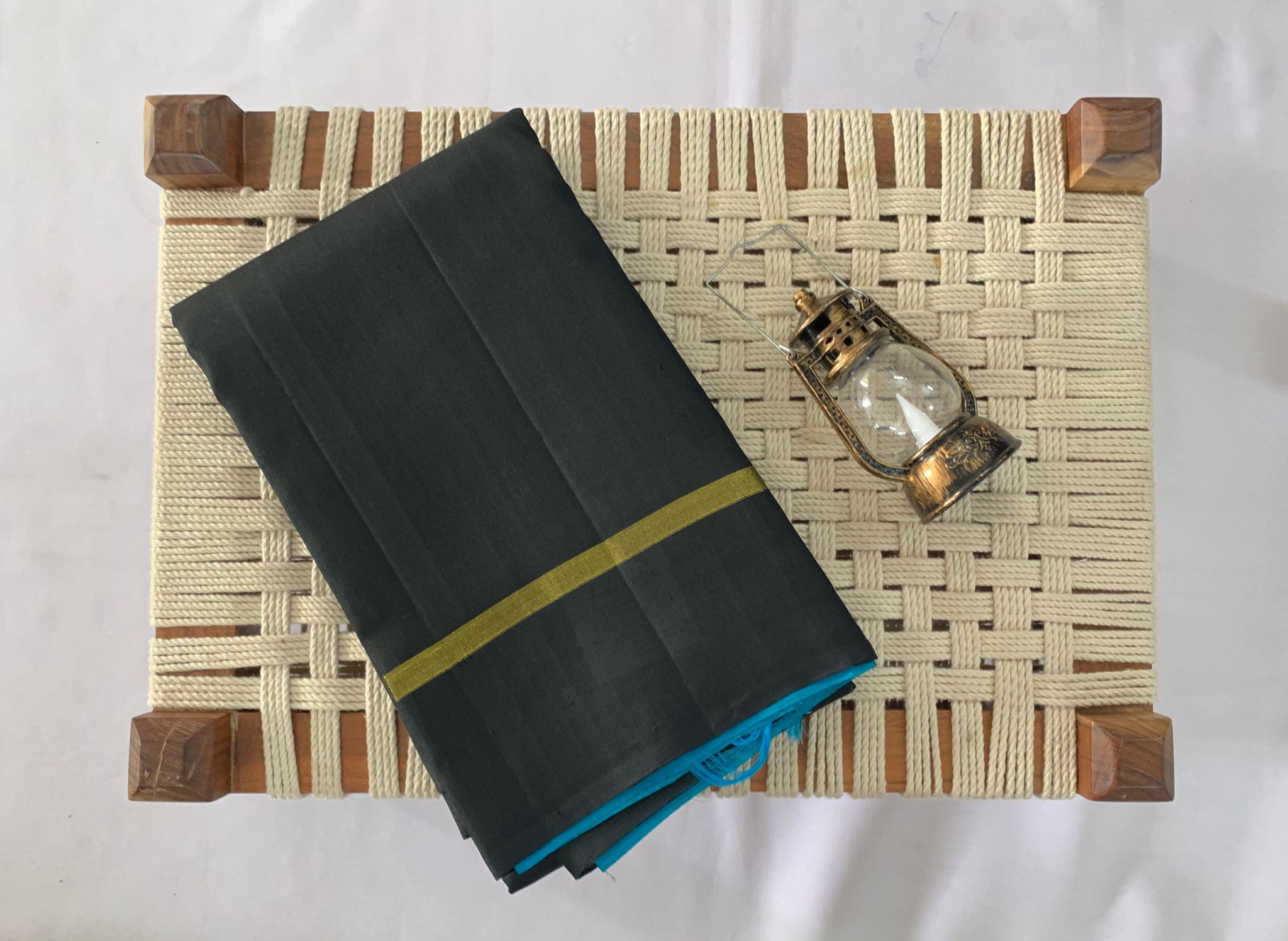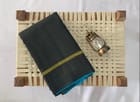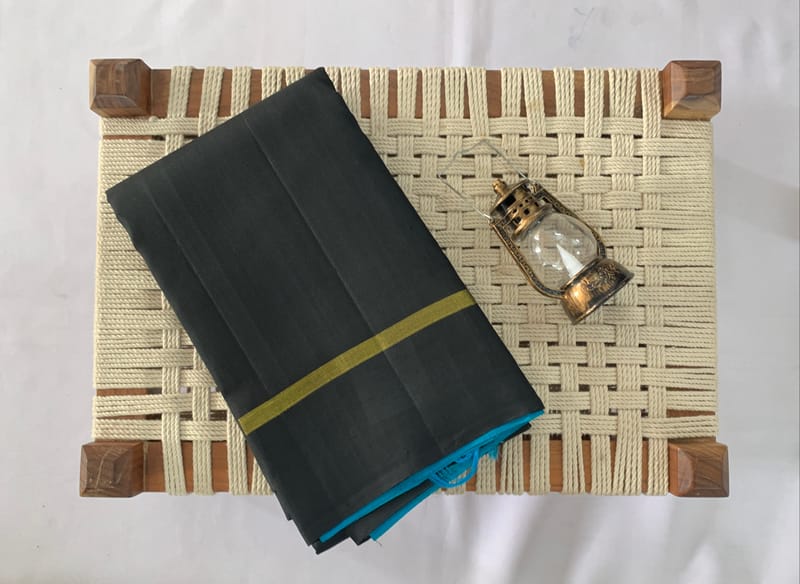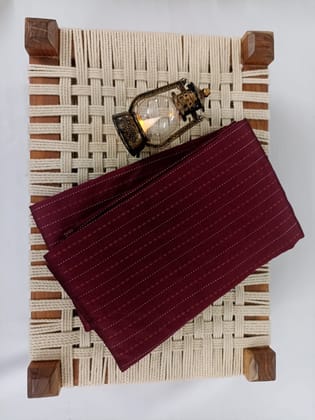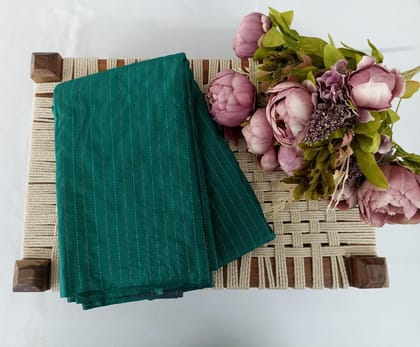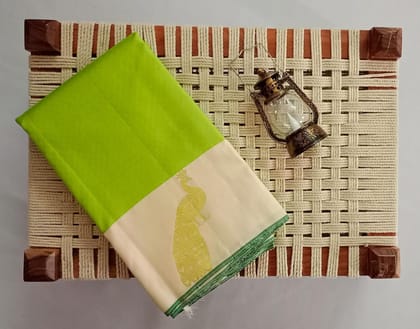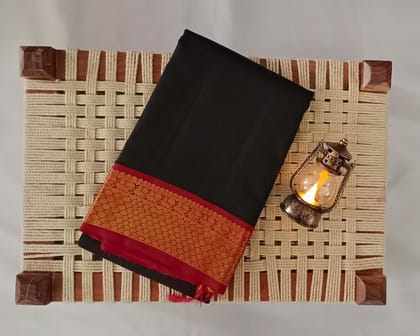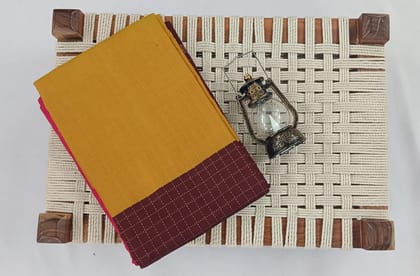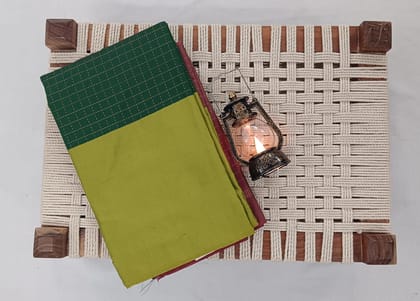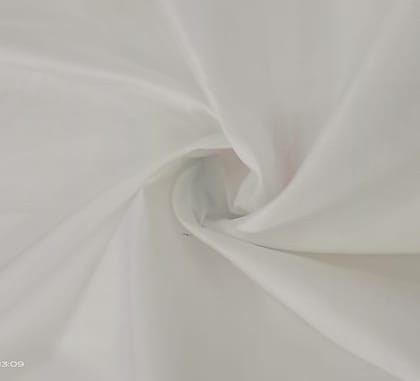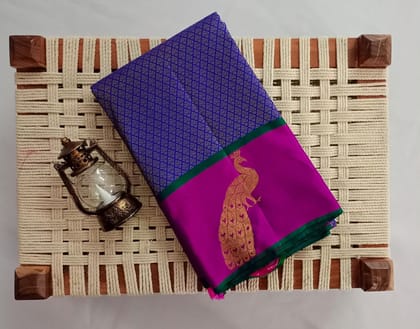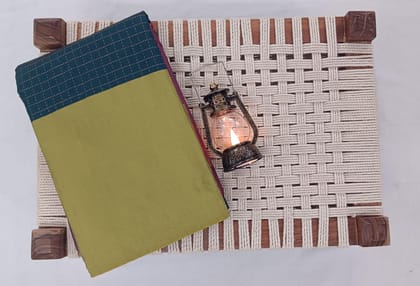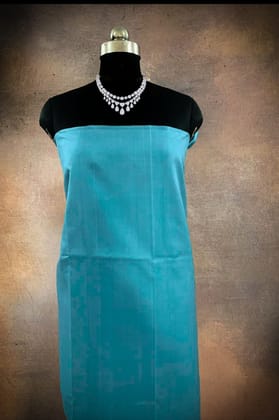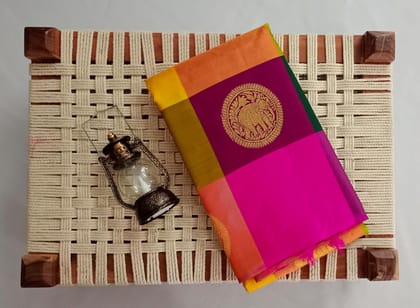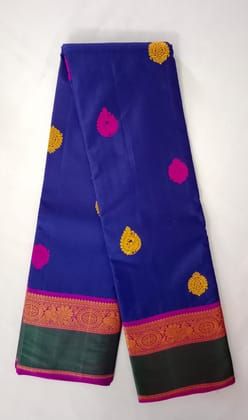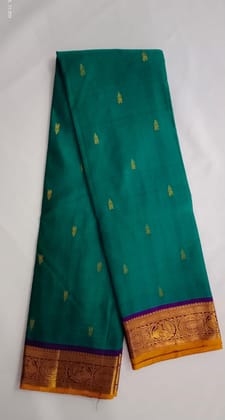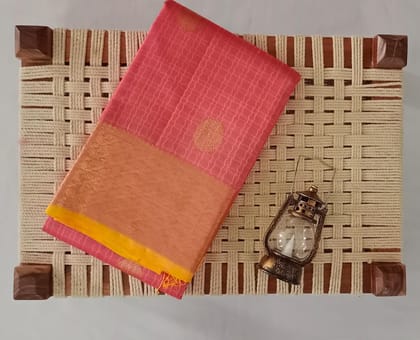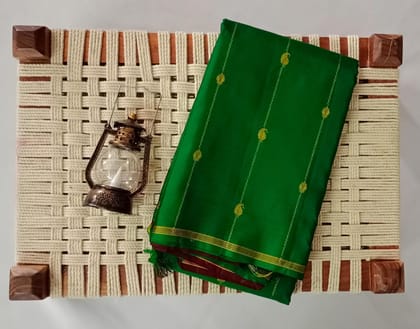Popular Categories
Support
Language
Our apps
NVDHSB030 -Black with Pallu Blue Color Dobby Handloom Silk Saree
MRP ₹15,500
| Country of origin | India |
|---|---|
| Common name | Silk saree |
| Net Quantity | 1 piece |
| Dimensions | 33*22*5 |
| Manufacturer or packer name | Navasaarigai |
| Manufacturer or packer address | Navasaarigai |
| Manufacturing Date | 01/2024 |
| contact details consumer care | [email protected] |
A Black with Pallu Blue Color Dobby Handloom Silk Saree is a striking and elegant traditional Indian garment that combines the richness of handloom silk with the intricate dobby weaving technique. Here's a detailed description:
-
Color Combination:
- The saree primarily features a black base with a distinctive pallu in blue. Black exudes sophistication and timelessness, while the blue pallu adds a pop of color and contrast, creating a visually appealing combination.
-
Material:
- Crafted from handloom silk, the saree boasts a luxurious texture, smooth feel, and a natural sheen. Handloom silk is known for its quality, making it a preferred choice for traditional ethnic wear.
-
Dobby Weaving:
- The saree is intricately woven using the dobby weaving technique. Dobby weaving allows for the creation of small geometric patterns and additional texture, enhancing the overall aesthetics of the saree.
-
Design Elements:
- Traditional Indian motifs, intricate patterns, or contemporary designs are likely woven into the saree through the dobby technique. These design elements contribute to the charm and visual interest of the saree.
-
Pallu Design:
- The pallu, the decorative end of the saree draped over the shoulder, is highlighted with a blue color. It may showcase elaborate designs, intricate patterns, or unique motifs, serving as a focal point of the ensemble.
-
Border:
- The saree may feature a contrasting or complementing border, framing the drape and adding an extra touch of elegance to the overall look.
-
Blouse Piece:
- The saree is likely to come with a matching or contrasting blouse piece, offering flexibility for the wearer to customize the ensemble according to their preferences.
-
Occasion:
- This saree is versatile and suitable for various occasions, including evening events, parties, weddings, and cultural celebrations. The combination of black and blue adds a touch of sophistication and can make a statement at special gatherings.
-
Maintenance:
- Handloom silk sarees require special care. Dry cleaning or gentle handwashing with a mild detergent is recommended to preserve the fabric, colors, and overall quality. Avoid exposing the saree to direct sunlight for extended periods to prevent color fading.
-
Styling Tips:
- Pair this saree with traditional or contemporary jewelry to complement the black and blue color combination. Experiment with blouse styles and draping techniques to personalize the look.
-
Overall Impression:
- A Black with Pallu Blue Color Dobby Handloom Silk Saree is a timeless and sophisticated piece that seamlessly blends tradition with modern design. Its unique color combination and intricate weaving make it a captivating choice for various special occasions, allowing the wearer to radiate elegance and style.
Washing a handloom saree, especially one made of delicate materials like silk, requires special care to preserve its texture, color, and overall quality. Here's a step-by-step guide on how to wash a handloom saree:
1. Check the Care Label:
- Before proceeding, check the care label on the saree for specific washing instructions. Different handloom sarees may have unique requirements based on the fabric and dye used.
2. Color Test:
- Perform a colorfastness test on a small, inconspicuous area of the saree to ensure that the colors won't bleed or fade during washing. Dab a small portion with a damp white cloth and check for any color transfer.
3. Prepare for Washing:
- Fill a basin or a clean sink with cold or lukewarm water. Avoid hot water, as it may damage the delicate fibers of the handloom saree.
4. Use Mild Detergent:
- Choose a gentle, pH-neutral detergent suitable for delicate fabrics. Avoid using strong detergents or bleach, as they can harm the saree's fibers and colors.
5. Pre-treat Stains:
- If there are specific stains on the saree, spot treat them before washing. Use a mild stain remover or a mixture of water and a small amount of detergent. Gently dab the stained area without rubbing to avoid damaging the fabric.
6. Submerge the Saree:
- Gently immerse the saree in the soapy water, allowing it to soak. Be careful not to agitate or wring the fabric to prevent stretching or distortion.
7. Gentle Hand Wash:
- Gently agitate the water with your hands to clean the saree. Pay attention to areas with stains or dirt. Avoid excessive rubbing or twisting.
8. Rinse Carefully:
- Drain the soapy water and refill the basin with clean, cold water. Rinse the saree by gently agitating the water until the detergent is completely washed out.
9. Remove Excess Water:
- Carefully lift the saree from the water and let the excess water drip off. Avoid wringing or twisting the fabric, as it can damage the delicate fibers.
10. Drying: - Lay the saree flat on a clean, dry towel. Gently roll the towel with the saree to absorb excess water. Unroll and repeat with a dry towel if necessary. Avoid hanging the saree, as it can stretch the fabric. Lay it flat on a drying rack or a clean surface away from direct sunlight.
11. Ironing: - Once the saree is dry, iron it on a low to medium heat setting. Use a pressing cloth to protect the fabric. Ironing helps restore the saree's smooth texture.
By following these steps, you can effectively wash your handloom saree while maintaining its quality and ensuring it stays in good condition for a long time.
- A Black with Pallu Blue Color Dobby Handloom Silk Saree is a timeless and sophisticated piece that seamlessly blends tradition with modern design. Its unique color combination and intricate weaving make it a captivating choice for various special occasions, allowing the wearer to radiate elegance and style.

